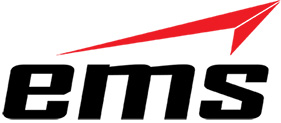There are many popular applications for 3D scanning and 3D printing such as product design, ergonomics, form, fit and function, dental, medical implants and much more. EMS has used their 3D Printers and 3D Scanners in all of these applications for over 12 years. With thousands of projects under our belt we thought we have seen and done everything imaginable.
That was until a few years ago we were contacted by a forensic engineering company wanting us to 3D scan a vehicle involved in a fatal accident. Not only did this company want us to 3D scan the vehicle they wanted us to 3D Print a scaled model to be used in the legal proceedings. Knowing this could be done we accepted the challenge and completed the project. The results were incredible. Using our high resolution Surphaser 3D Scanner we were able to pick up very good detail of the vehicle in its current damaged condition. After we 3D Scanned the vehicle we then used a few different software products like Design X (Formally RapidForm XOR) and SenAble Technologies FreeForm modeling. Because the scan data in polygon format was not “watertight” after the 3D scanning, we needed to fill in many areas to facilitate the 3D printing process. 3D Printers require the model to be water tight so they can completely print the model as a solid object. Water tight basically means there are no holes in the model.
During the 3D scanning process it’s impossible to 3D scan everywhere for a few reasons. For example we couldn’t get underneath the car completly nor much of the interior because of the condition of vehicle. Using the above mentioned software products we filled these areas in to make a solid model that was ready for 3D Printing.
The resulting 3D Printed model was a very close replica to the actual vehicle and it proved very valuable in the legal proceeds. This model allowed the attorneys to show how certain parts on the vehicle had malfunctioned causing the accident. The scaled model was passed around to the jurors who could touch and feel an actual object in addition to pictures, animations and other evidence. Not only was a model of the car 3D printed, certain other mechanical parts where also 3D scanned and 3D printed and shown to the jurors. This allowed the attorneys to show the jurors a very in-depth and hands-on explanation to what happened in the accident.
The 3D scanned and 3D printed models where so helpful in this case that EMS was soon contacted by other attorney’s and forensic engineers wanting to know more and to work with EMS. Since this first case we have 3D scanned and 3D Printed helicopters, planes, boats, buses, accident scenes, trucks, mechanical objects and more.
We have also 3D Scanned and analyzed products involved in patent litigation. Specifically looking at the a design and shape of a product as its compares to a patented product. Using inspection and analysis software we can determine how close two 3D scanned objects are in their volume, shape and overall design.
EMS is always looking for new ways to use 3D printing and 3D Scanning and its use in the field of forensics continues to grow.
Picture credit: wikipedia (La Cara Salma)


